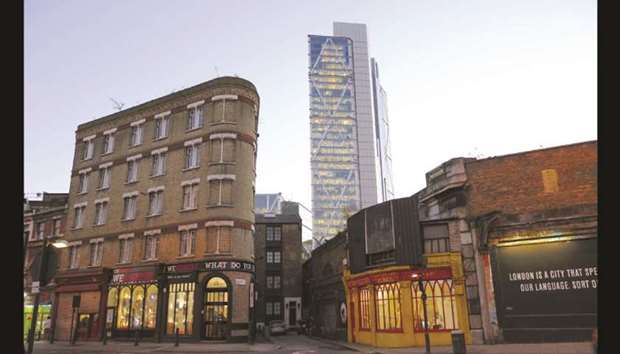When the UK’s International Trade Minister, Greg Hands, met with Qatari Minister of Economy and Commerce, HE Sheikh Ahmed bin Jassim bin Mohamed al-Thani, for the inaugural Joint Economic and Trade Commission (Jetco) in December, there was a mutual agreement to support small businesses.
In the UK there is a great deal of energy, talent and enterprise within the digital sector with SMEs forging ahead particularly in a cluster near the City of London. JLL has recently undertaken research into how these tech and media businesses are likely to prosper in the coming years and through the Brexit process.
Their latest report ‘Digital London’ asserts that Brexit related fears of a loss of confidence is not the reality. The start ups and SMEs questioned retain a largely positive attitude in relation to issues such as staff recruitment and retention while expressing some concerns about costs.
The Digital London report states that over the past three years 25% of all lettings to Technology, Media and Telecommunications (TMT) companies were in the emerging business landscape of Aldgate, Clerkenwell and Shoreditch — now seen as effectively ‘core’ London.
Most businesses are confident about their future and expect to remain in the area as they recognise its value in attracting clients and recruiting talent. These are young, ‘space hungry’ companies so it is not surprising that almost half expect to move within the next five years, of which over 60% say that it is due to their need for more (or better) space. Although, a significant minority feel that rising costs are a real issue.
The tenant mix in Shoreditch is shifting away from creative and digital media and towards ‘harder’ tech companies. Hard tech companies are defined as those developing new applications/software e.g. mobile phone app designers, fintech, healthtech and edutec.
Such companies represented just 2% of lettings outside ‘Big Tech’ in the 2012-2014 period, but this has risen to 23%, a more than thirtyfold increase in square feet terms. They may find it easier to pay the higher rents now demanded.
The average letting size has moved closer to the figure for London as a whole. This may reflect a shift away from smaller businesses — or simply the fact that SMEs may now be finding their home in flexible workspace. Companies House data still suggests significant increases in SME registrations throughout the area.
Very few companies would consider moving to other UK locations, even though the cost of London housing is a major concern.
Some will adapt to rising costs by occupying less space and introducing new working styles. Many already have flexible working patterns or hot-desking policies and there has been more than a tenfold increase in flexible space provision in the area over the past three years.
Others will look further afield, with locations just outside the core, such as Hackney or Dalston, likely to benefit given that rents here are now significantly lower. Take-up here increased by 56% since the last report with a notable increase in flexible space providers and businesses in the creative sector.
Whitechapel is best placed to capitalise on this trend, given its Crossrail station and proximity to already established areas. Government may need to take a more active role in helping bring more appropriate sites forward in these areas.
Broadband speed is considered the most important issue when choosing an office, above occupational costs.
The attraction so many companies evidently still have for the area means newly delivered space will be absorbed and rents will continue rising. By 2019, prime rents in Shoreditch and Clerkenwell will be ahead of the City core.
The business mix in areas such as Shoreditch will continue to shift towards ‘harder tech’ and away from ‘creative companies’ — namely, companies in ‘traditional’ advertising, marketing, communications, broadcasting and media. This will be a slow process though and both flexible working and emerging areas slightly outside the existing core will ensure the cluster still prospers.
Business / Business
JLL’s Digital London report shows confident outlook in sector with growth of ‘hard tech’

Curve brick building in the English traditional style mixed with the modern one in Shoreditch and Liverpool Street area, in north-eastern London. The tenant mix in Shoreditch is shifting away from creative and digital media and towards ‘harder’ tech companies.
